Article
Enamel defects are relatively common in anterior teeth and may cause aesthetic concern for a patient. They can present as white, yellow-brown or brown opacities. These opacities can have a profound effect on patients' self-esteem and confidence.
Microabrasion is a conservative, non-restorative method to remove this discoloration. It is often the treatment of choice, especially for brown opacities, as it is a simple yet effective technique.
If the stains are present in the outer layers of enamel they can be easily removed using microabrasion, leaving a smooth, glassy enamel surface as the finished result (Figures 1 and 2).
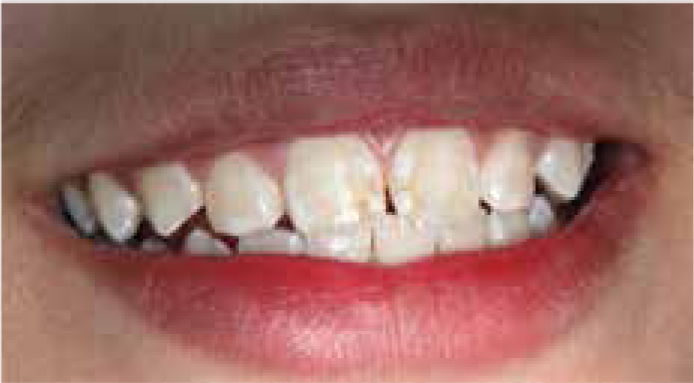
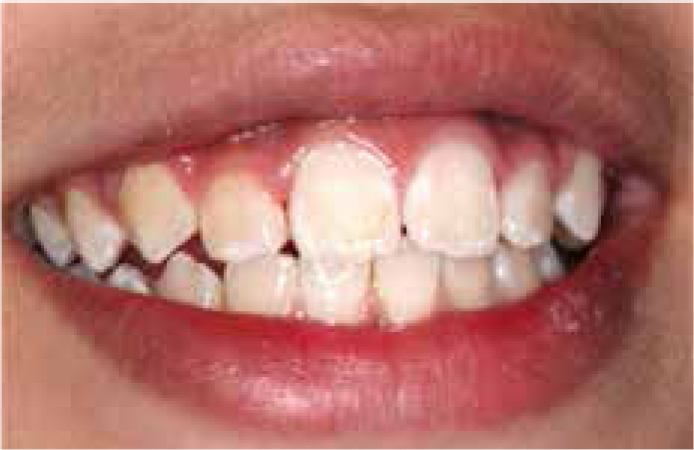
If there is an area of discoloration which is deep, this technique may need to be used in conjunction with tooth whitening or composite restorations.1
It is important to ensure that patients are aware that microabrasion is not always successful.
Technique
Clinical photographs and sensibility testing are recommended prior to commencing microabrasion to form baseline records. This should be repeated after the procedure.
Isolate the affected teeth with rubber dam. Rubber dam placement is essential primarily to protect patients' gingivae from coming into contact with the acid etchant (usually 35% phosphoric acid), as well as to improve access and aid visibility for the operator. Clamps can be used to secure the rubber dam either side, alternatively, the rubber dam may be secured by widgets as this is often well tolerated and widely accepted by patients.
Dispense equal quantities of the pumice and the acid etch (Figure 3). This can be mixed in a dappens pot to make a pumice-acid slurry (Figure 4). The slurry can then be applied to the buccal surface of the tooth using a rubber cup or bristle brush (Figures 5 and 6). Use a slow-speed, latch grip handpiece, running the motor at 1000 rpm for 30–40 seconds over the areas of discoloration. To reduce acid splatter, acid may be applied onto the tooth using a hand applicator for 1–2 minutes and polished afterwards. The pumice acid etch slurry can be applied onto the same tooth up to three times. Between each application, the slurry should be rinsed and dried from the tooth surfaces.

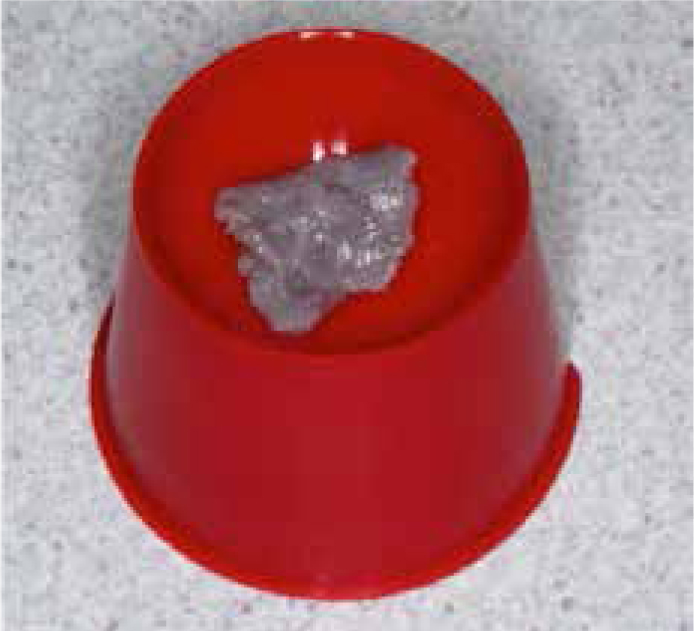
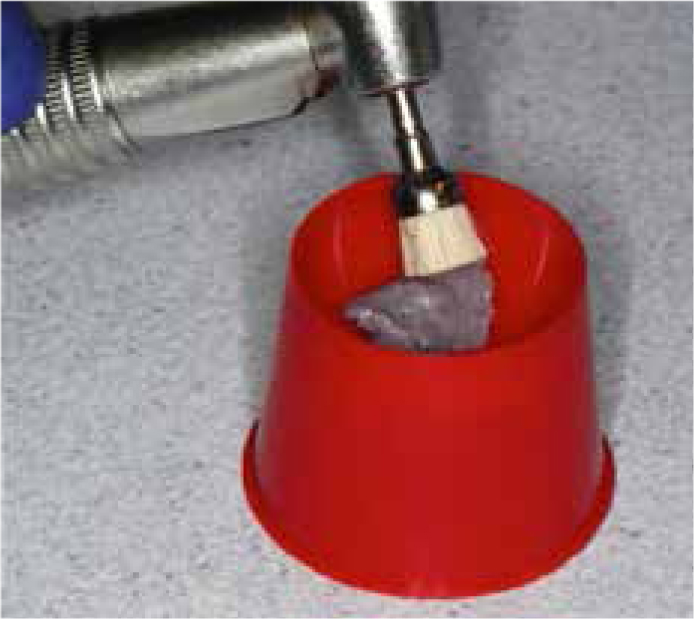
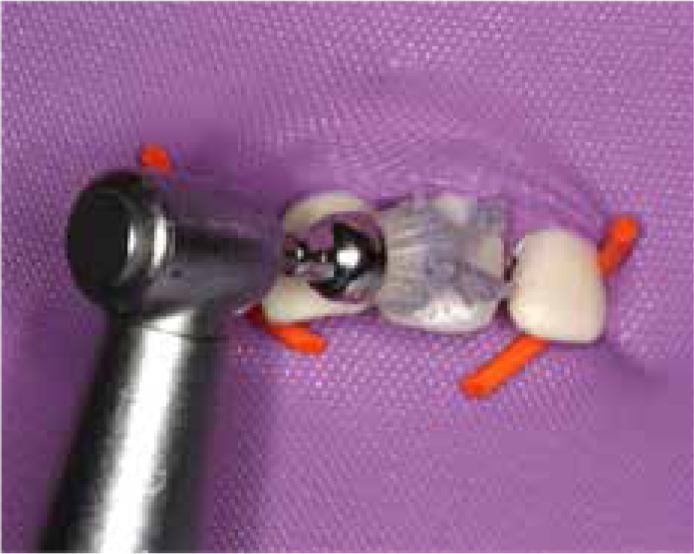
Alternatively, 6.6% hydrochloric acid with silicon carbide particles (commercial product name of Opalustre) may be used up to ten times for 60 seconds and applied using a wooden stick or 18% hydrochloric acid may be used instead and applied up to a maximum of 10 times for 5 seconds.
Remove the rubber dam. Advise the patient that the tooth has been dried out from the dehydrating effects of the rubber dam (whole tooth appears whiter) and the colour will change once the tooth is hydrated.
Fluoride needs to be applied to the treated teeth following a cycle of microabrasion, such as 0.2% sodium fluoride liquid2 or 2800 ppm sodium fluoride toothpaste, to enhance remineralization. Ensure that the toothpaste is white and not coloured.
It is imperative that patients are warned not to consume coloured food/drink at least 48 hours following their treatment, eg ‘not to eat anything that would stain a white t-shirt’.
Evaluate the results and arrange a one-month post-treatment review appointment.
